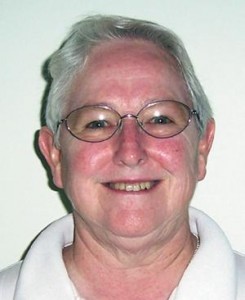By Mary Wieser

Q: With the new translation for the Mass, why did we have to do a bunch of changes all at once? Wouldn’t it have been easier to understand if we had taken the changes one at a time?
— Olivia Clark, age 11, sixth grade, Church of the Visitation – Camanche
Not everyone agrees with the new translation. All change is a struggle. Many of us may think the same as you. But this is a wonderful time to learn and experience what the Mass is really all about.
The Vatican issued new rules for translating from Latin into the language of different countries. The changes in English are extensive. What we say at Mass has changed, including the words in the Glory to God, the Creed, and the introductory dialogue between the celebrant and assembly in which all are invited to join in prayer and thanksgiving to God.
So why all the change? A number of bishops, priests and liturgists over the years were concerned that the translation of the liturgical texts, which was made in some haste in the late 1960s, was not sufficiently faithful to the Latin and was, at least in some instances, not clear as to having correct theology.
Over the course of many years, two groups in particular — ICEL (the International Commission on English in the Liturgy) and Vox Clara (a committee of bishops, liturgical experts and linguists from around the English-speaking world) — labored over a new translation. This work was approved by the U.S. Conference of Catholic Bishops and finally by the Vatican. Advent 2011, the beginning of the new liturgical year, was chosen for implementation of the new Missal with all of the changes.
The easy change has been the response we make, “and with your spirit.” Perhaps if we would have learned the new words for the Creed and used it for a few months and then learned the Glory to God, it might have been easier for us. But it didn’t happen that way.
I would be interested to know what you think about the changes now that they’ve been in effect for a couple of months. If pastors and faith formation people have done a good job of helping us understand the changes, then we are much more comfortable with the changes.
The texts you hear the priest praying from have a new style. Have you experienced this? Many of our priests have used the “old” translation for up to 40 years. Can you imagine how difficult this change is for your priest?
Praying at Mass is not as easy as it sounds. You come with the cares of the day and the plans for tomorrow. Not everyone joins in the songs. Someone’s cell phone will go off. Babies will squirm. Those fighting the flu will cough.
When the priest says, “Let us pray,” you want to. But you may find it hard to concentrate on what he says next. Prayer is work. Those prayers you hear the priest say are being retranslated from Latin to English. No one expects that this will suddenly make everyone more attentive. But the prayers are designed in a way that makes them worth the effort.
What inspires these new texts? They are more courtly and theologically rich, more scripturally poetic, and this is all good. An unmistakable feature of the Latin liturgical texts is their nobility and stately seriousness. They were composed by people who clearly knew that liturgical prayer is a manner of addressing Almighty God, the Lord of heaven and earth.
Accordingly, they used the language not of the street or political forum, but instead, the speech appropriate at the court of a king to whom supplication is being made. They employ the kind of speech one might use in addressing the president in a formal letter or the recipient of an honorary degree at a university commencement exercise.
A point of history: when the original texts were rendered into English in the late 1960s they were translated in accord with certain definite cultural tendencies of that time. Starting in the 1960s, we began to prize speech that is blunt, clear, direct, casual and unadorned. And we developed a prejudice against language that seems fussy or overly ornamental. So that’s part of our challenge.
But the Church and the bishops have given us these new texts, and I think it is wise for us to accept them in a positive spirit. I hope we will find in time that the new missal will deepen and enrich our prayer together. We must never lose sight that we are people in need of the Eucharist.
(Wieser is director of Faith Formation for the Diocese of Davenport.)
(Students in grades kindergarten through 12 are invited to submit questions about the Catholic Church for The Catholic Messenger’s new Young & Curious feature. Send them to arland-fye@davenportdiocese.org or The Catholic Messenger, 780 W. Central Park Ave., Davenport, Iowa, 52804.)








